Want healthy potted plants that thrive? Knowing the right potting soil for plants is a must-have. Just as each plant is different, so is the type of soil it needs. Here’s everything you need to know about choosing the best potting soil for plants, plus a recipe for a peat moss alternative.
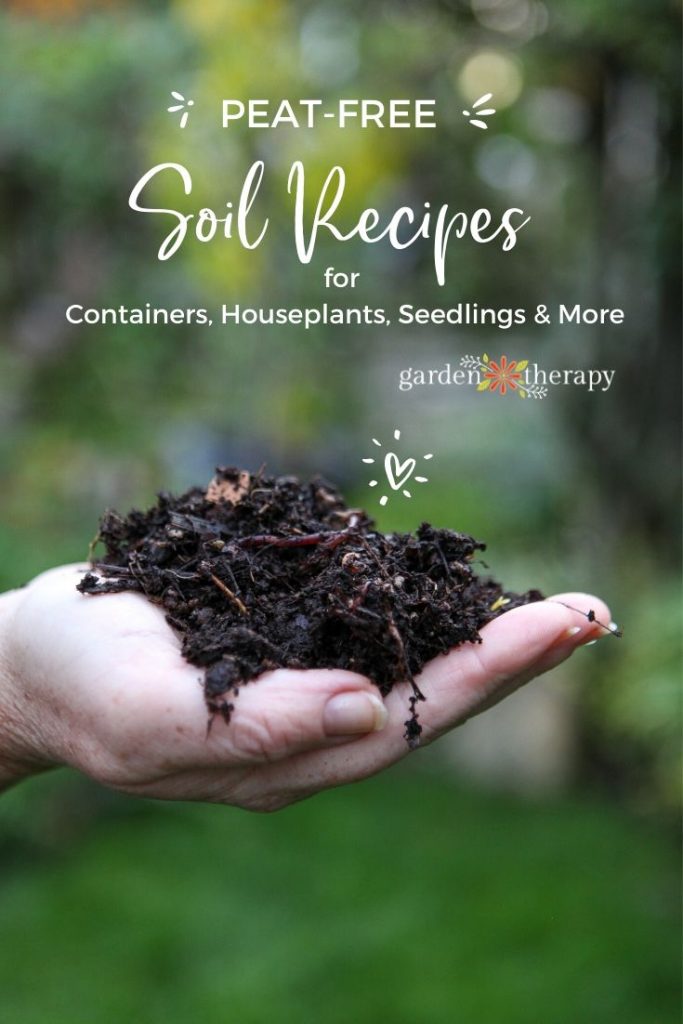
The health of your plant begins with the soil it’s planted in. No matter how lush and beautiful the plant is, it won’t stay that way if it is put in the wrong soil and does not get the nutrition, pH level, or moisture drainage that it needs.
Container gardens and potted plants provide another challenge in that there are not the same opportunities for plants to gather nutrients and moisture from deep in the soil. A garden pot is a closed environment so we need to set it up for success in the beginning!
Some plants love soil to retail moisture while others need great drainage. At different times in the growing cycle, plants need different nutrients. This is why there are different potting soil combinations available at the garden center.
Today I’ll share my home recipes for DIY potting soil and as a bonus, they are all peat-free.
Great Read: Garden Alchemy
I’ve always been fascinated by gardening and how plants grow, but I became even more enthralled with this incredible process when I moved into my current home eight years ago. The garden plants were overgrown and sickly, covered in disease and pest problems.
It seemed strange to me because the landscape choices were perfect for the climate and zone, so I figured it must be soil nutrition. I started building the soil and cutting back the damaged plants and over time I discovered the problem: the garden beds were loaded with construction waste! Often in home renovations, the contractors will bury big chunks of concrete and debris from the build under the soil thinking that nobody would notice.
The plants sure did notice though! Without healthy soil, they were fighting to stay alive and couldn’t fend off pests and diseases like healthy plants can.
I went to work repairing the soil. I removed the debris, amended the soil, and kept on building it until the plants turned around. Now, my garden is thriving and lush, with very little effort from me. It just goes to show you how important it is to set the right foundation for plants to grow in.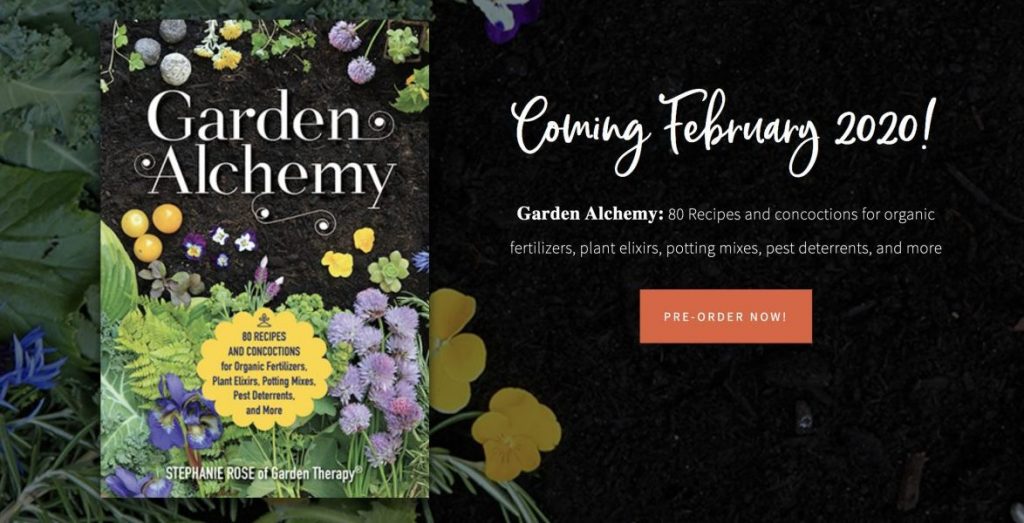
It was partly this experience that made me look deeper beneath the soil to create the recipes for my book Garden Alchemy: 80 Recipes and concoctions for organic fertilizers, plant elixirs, potting mixes, pest deterrents, and more.
I won’t lie to you: this book was a really tough one to write. I dove into the issues of sustainability and how things have evolved on our beautiful planet. On multiple occasions, I shed actual tears as I mourned how disconnected we’ve become from nature as a whole. But like my garden that healed when it was brought back to nature, I used what I learned to create over 80 recipes for gardens that use Mother Nature’s methods.
Garden Alchemy is a book that reflects the hope and the FUN of using what tools we do have to become better stewards of our gardens. I dedicated a whole chapter to soil, but one of my favourite parts was all the peat-free potting mix recipes.

Why We Need Peat Moss Alternatives
Because there isn’t a natural ecosystem in a contained environment such as a pot or a garden bed, we have to amend the soil to add it. Peat is very often used in container garden mixes because it is a light, sterile, highly absorbent material that offers porosity and moisture retention properties that work well for potted plants.
While peat definitely has it’s benefits, it has a few drawbacks.
It’s naturally acidic so it needs lime added to neutralize it for use with non-acid loving plants. That’s a pretty easy fix though.
What’s more of a drawback that peat is hard to re-hydrate once it dries out. If you forget to water plants for a while, the top of the potting mix can become a solid block and water will just run off of it! This is a recipe for disaster in soil mixes and there are better alternatives.
Of most concern is the environmental considerations of using peat for horticulture purposes. I used peat, like many gardeners, for years without thinking about it too much. The more I started to study permaculture and following the source path of the materials we use, I started using it less and thinking about it more.
When I was writing my upcoming book, Garden Alchemy, I did a deep dive into the issue of using peat for horticulture purposes. There are certainly many sides to the issue, especially in Canada where 12% of our land mass is peat bogs.
The Environmental Issue of Peat Bogs
Sphagnum peat moss comes from bogs that cover 3% of the Earth’s surface, the largest of which (25% of the total) lies here at home in Canada. Peat bogs are excellent at storing carbon to reduce climate change and are home to both wildlife and rare plants. Peatlands are protected in Canada, which means that only a small percentage of them can be harvested and it must be done responsibly, with a plan to regenerate the bogs.
Even so, it takes many years to repair the land and the ecosystem displacement of wildlife may never recover. Not to mention the release of stored carbon, which is the opposite of what we should be doing.
It’s for all of these reasons that I have switched to peat-free in my recipes and garden, with all my soil recipes containing peat moss alternatives.
DIY Peat Moss Alternative Recipe
Thankfully, this homemade alternative to using peat moss works just as well without the acidity, drying out, and environmental impact. Making the switch may be slightly inconvenient at first, but I promise you the return is well worth it. Make a batch early in the season and store it in a sealed container for year-round use.
Here is my simple recipe for a simple DIY peat alternative:
*I have a choice of either rice hulls or perlite as they have similar performance in the mix. This way you can choose the one that works for you. Rice hulls are a byproduct and can be found at home brewing supply shops very inexpensively. Perlite is more available as it is at every garden and home improvement store but it is a mined product.
6 Peat-Free DIY Soil Recipes to Try
Now, let’s use this peat moss alternative in some basic recipes, shall we? Here are six of thirteen soil recipes from Garden Alchemy to get you started.
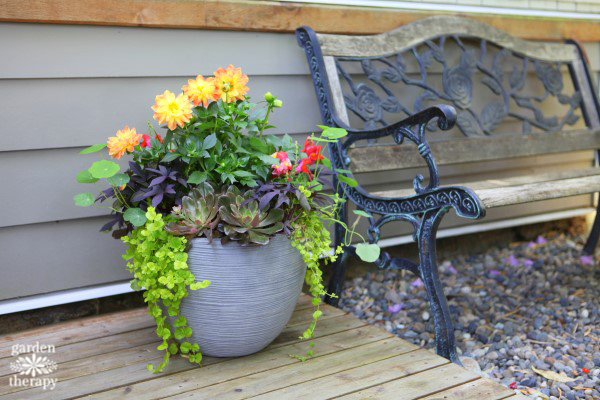
The Best All-Purpose Potting Soil for Container Gardens
Container gardens dry out quickly compared to garden beds, so it is important to have soil that will retain moisture and keep your plants hydrated.
I recommend using resin or glazed pots for container gardens to help retain the moisture. If you want to use a clay pot, that’s fine too. Just be mindful that water will evaporate faster in clay. It may help to place the clay pot within another container too.
DIY All-Purpose Potting Soil for Containers (Peat-Free)
- 2 parts screened compost
- 2 parts peat moss alternative (from recipe above)
- 1 part perlite
Plus these amendments to build soil nutrition:
- 1 cup (235 ml) worm castings per each gallon (3.8 L) of prepared mix
- 1 tablespoon (15 ml) greensand per each gallon (3.8 L) of prepared mix
- 1 tablespoon (15 ml) mineralized rock dust per each gallon (3.8 L) of prepared mix
- 1 tablespoon (15 ml) kelp meal per each gallon (3.8 L) of prepared mix
The Best Potting Soil for Cacti and Succulents
Succulents and cacti thrive in dry environments and absolutely require their soil to dry out completely in between watering. They aren’t able to do this as easily in your everyday garden soil. Instead, the best soil for them is made up of light, airy materials with excellent drainage.
DIY Cacti and Succulents Potting Soil Recipe (Peat-Free)
To make cactus or succulent potting soil, combine:
- 1 part compost
- 1 part sand
- 1 part ground bark
- 1 part pumice
Mix well and remember not to overwater!
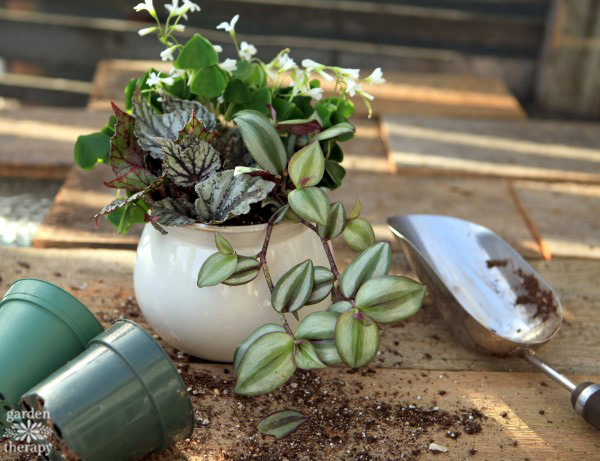
The Best Indoor Plant Potting Soil
Like other potted plants and container gardens, houseplants will dry out quickly and need a soil mix that will retain moisture and keep them hydrated.
However, unlike outdoor containers, houseplants require sterile soil—anything else is likely to contain critters from the outdoors like the dreaded fungus gnats that will get into the house and can become a big inconvenience.
Sterilizing Compost for Indoor Plants and Seed Starting
With the exception of compost, most soil ingredients do not have active biology. Prepare compost for indoor potting soil by baking moist soil in the sun or an oven for at least thirty minutes at 180°F (82°C). Alternatively, you can purchase sterilized compost. Store any leftover compost in an airtight container for future indoor and seed-starting potting mixes.
DIY Indoor Plant Mix Recipe (Peat-Free)
- 2 parts sterilized compost
- 2 parts peat moss alternative (see recipe above)
- 1 part worm castings
- 1 part perlite
- 1 part vermiculite
- 1 part sand
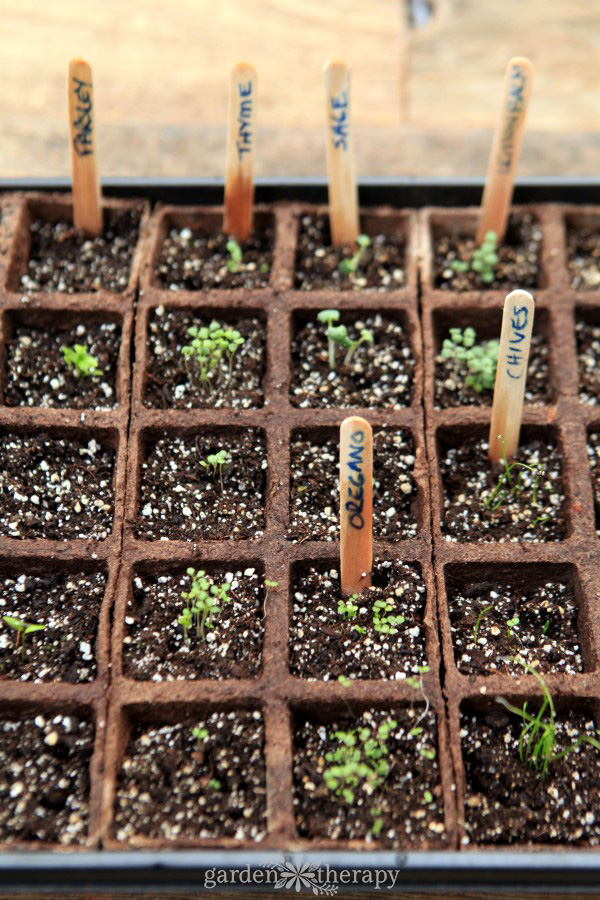
The Best Seed-Starting Potting Soil
For seed-starting, it is important to create a mix with fine particles, moisture-holding ingredients, and sterile ingredients that won’t stimulate fungal or bacterial growth. Seed mixes don’t need fertilizer or nutrient mixes as the seed carries all the nutrition that the seedling needs to sprout.
Once a plant develops its “true leaves,” it’s time to pot up the seedlings using a transplant mix, which will keep the plant growing strong until it’s ready for the garden. While seed-starting mix is soilless and sterile, once seedlings get growing they are going to need a boost of nutrients to keep them growing.
I’ve tested a ton of different recipes over the years and I can say without a doubt, this is the best one I have ever used. And I start a lot of seeds. Too many really. You know what I mean, right? By summer I’m giving potted up seedlings to everyone who walks by my house!
DIY Seed Starting Potting Soil (Peat-Free)
To give plant seeds their best start, plant them in a mixture of:
- 2 parts screened and sterilized compost
- 2 parts peat moss alternative (see recipe above)
- 1 part perlite
- 1 part vermiculite
The Best Seedling Transplant Mix
A seedling transplant mix has excellent drainage and available nutrients for developing healthy roots on young plants and propagating cuttings.
If the seedlings are moved to the garden in a few weeks after potting up, then this recipe is sufficient. But if you need to grow them in small pots for a longer period, they will need more nutrition. Bump the worm castings up to 1/2 cup (120 ml) per gallon (3.8 L) and apply an all-purpose liquid fertilizer every 2 weeks when watering.
Seedling Transplant Potting Soil Recipe (Peat-Free)
- 2 parts screened compost
- 1 part peat moss alternative (see recipe above)
- 1 part perlite
- 1/4 cup (60 ml) worm castings per each gallon (3.8 L) of prepared mix
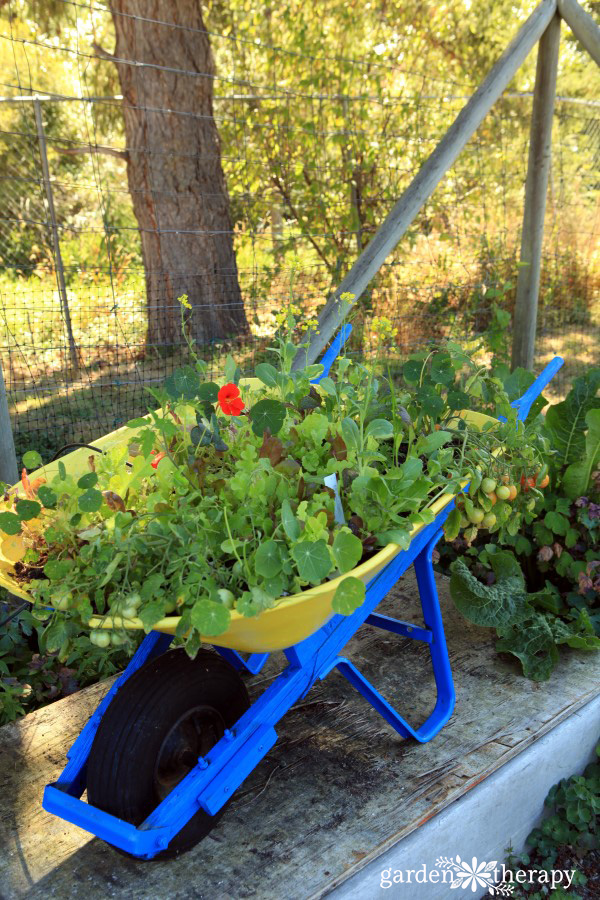
The Best Potting Soil for Vegetables
Since veggies are consumed, it’s vital to make sure they grow in the most nutrient-rich soil possible. This is definitely an area not to skimp. To produce the largest (and tastiest!) harvest possible, vegetable plants need lots of nutrients and humus-rich soil.
DIY Vegetable Garden Soil Mix (Peat-Free)
Get your veggies off to a great start by planting them in a combination of this base mix:
You’ll need to amend the potting soil mixture above a little more for your veggies. For each gallon of the prepared potting mix above, add the following:
More DIY Potting Soil Recipes
Whew! That is a lot of recipes for one post! I think we better stop there but if you want to read more of the chapter on soil and get the rest of the peat-free potting soil recipes, be sure to pick up a copy of Garden Alchemy wherever books are sold or ask your local library to bring in a copy.
You might also like these posts:
- How to Do a Soil pH Test at Home
- 5 Reasons to Use a Compost Tumbler
- Seed Starting 101
- A Compost Recipe to Demystify Composting
- Mix Herbs and Vegetables in the Garden to Deter Pests Naturally
Peat Moss Alternative
Equipment
- 1 Airtight container
Supplies
- 1 part compost
- 1 part OMRI listed coconut coir
- 1 part rice hulls or perlite *see note section below
Instructions
- Mix together the three ingredients and use in soil recipes instead of peat moss.
- Store excess in an airtight container.

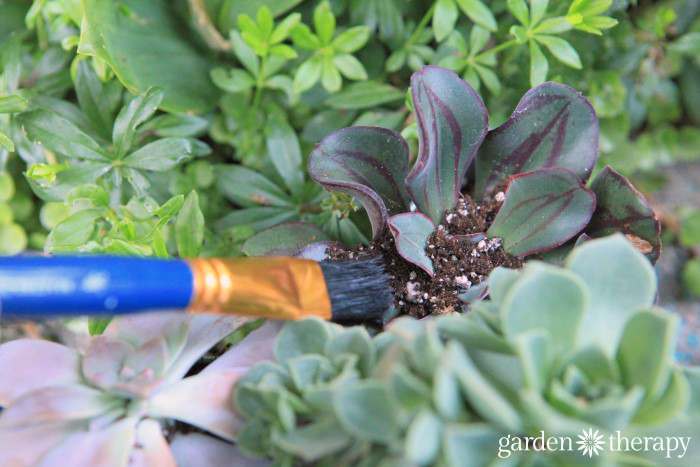
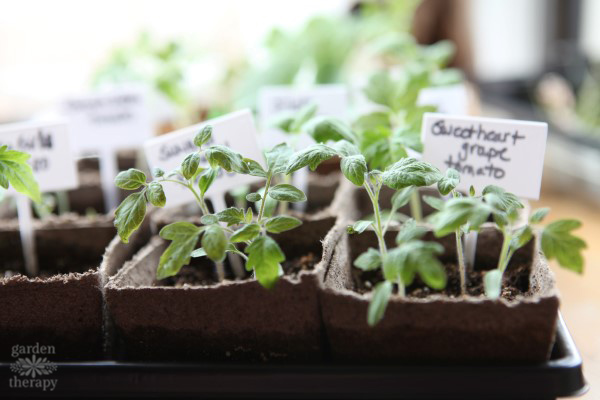
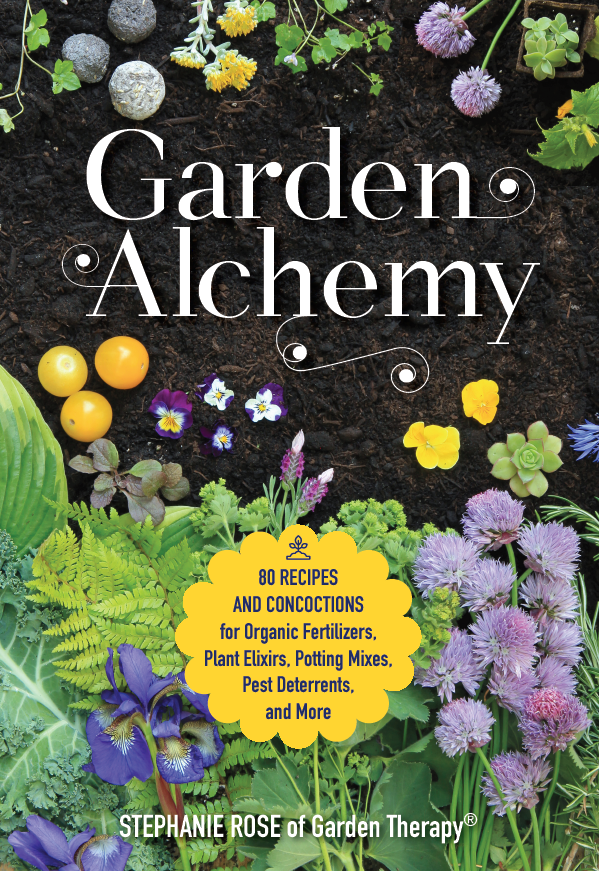





Hello! Thank you so much for this post. I was wondering, for the DIY vegetable garden soil mix, can I use play sand (unused, still in the bag)?
yes, absolutely, as long as it’s not treated. Play sand usually is washed for children’s safety so it’s a great option.
Folks talk about the environmental costs of peat moss and put coir on a pedestal. But that brick of coir didn’t spring out of the floor at Lowe’s. There is some processing going on to convert the natural stuff to that condensed brick. Also what does it cost to ship it to the U.S. from WhereTheHeckIsThatAstan? Inquiring minds want to know…
John, definitely read more about this in my book, Garden Alchemy where I discuss it in detail.
Hi there! I am wondering about your DIY All-Purpose Potting Soil for Containers (Peat-Free) recipe.
I live in Canada and have to buy all the parts for this recipe. I do not make my own compost at this time. For this recipe have you tried using composted manure for the compost? would this work as this is the only thing I can find at this time of year here. I am planting a lot of bulbs in containers this year (tulips, narcissus, anenome, irises etc. I was hoping to do it try peat free soil but have heard mixed reviews of people doing it themselves. This was a big investment into the bulb/corms, so I really don’t want to have a mix that doesn’t work. Do you think this would be a good mix for this if I add additional grit below the bulbs (such as oyster shell…can’t find horticultural grit here). Thanks so much Nicole
Hi Nicole, great question! Composted manure is fertilizer, and not the same as compost. It is very easy to buy in Canada, I love here too! Go to your local garden center and ask where the compost is. They will have it in bags and perhaps even a pile you can serve yourself with. Stay away from the big box stores, as they will not have what you need. The garden nurseries will though.
ohhh my gosh, I can’t beleive you have fallen for the climate change scam!
Only God can affect our climate???? God gave us the earth to use all of its many benefits!!!
I do not follow climate changers because you haven’t thought it throug????
Hello! Thanks for this post! This might be an obvious question but I’m wondering, when measuring parts, do you measure parts by volume or by weight? Thanks!